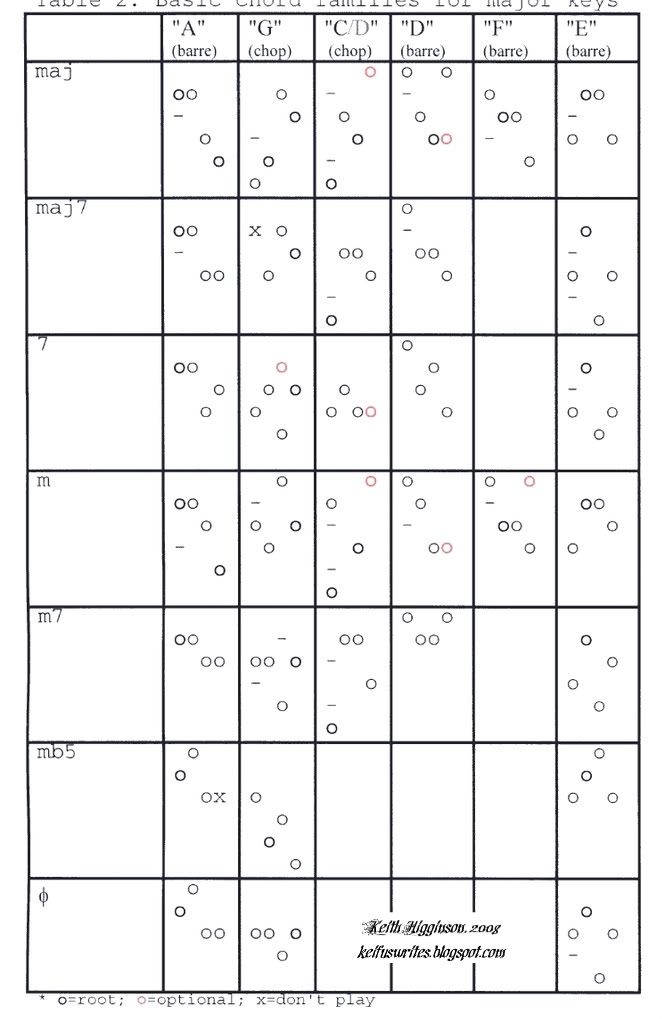Major Key Chord Progressions and Fingerings for Mandolin
This isn't a normal blog post, but a placeholder to "publish" something that might be useful for other people learning to play the mandolin.
[Update: This post seems to get a lot of search hits: I'll add that I find the "chord families" probably the most useful, and am much too lazy to practice lengthy chord progressions I'll rarely use, although I still do sometimes. Also note that there are a couple errors in the charts--took forever to get all the dots aligned. Finally, if you're a relative beginner looking for someone to pick around with in the MA area, feel free to follow the email link.]
I have put together some tables for chord progressions, chord families, and suggested fingerings for the instrument. The tables were inspired by some of the drills suggested in Music Theory for Modern Mandolin by Thomas P. Ohmsen, and put together in a format that I find particularly useful.
The first table just lists some common chord progressions in each of the twelve major keys, written in a manner convenient for practicing. I didn't include all the variations of course. (The bottom part (II-V-I) of a circle of fifths progression can be expanded by including columns to the left, one at a time.) I listed them as triads only because it was easier to write, and I actually try to practice both the triad and 7th degree voicings.
For the second table, I borrowed the idea of using chord families from Niles Hokkanen in his handy short book, Pocket Guide to Mandolin Chords (it fits in your case!), and I have used the concept to assemble a somewhat complete table, using labels I'm comfortable with. In the fingering diagrams, the root note is bolded, and the positions are consistent within the column. The actual chords can be moved up and down the neck easily, keeping track of the root notes for each family.
The third table shows the best fingerings I've worked out so far for the major-key chord progressions, all at roughly the same distance along the neck, and in some cases, they're the ones that flow really naturally into one another. Positions are consistent relative to one another across the rows. Some alternate shapes are also suggested (but I only wrote one set of fingerings for each progression).
I am a regrettably slow learner with this stuff, and sometimes find that one voicing over another will sound better in context, especially when playing by myself (which I normally do). Sort of thing that will come out with practice I imagine, and these exercises are meant to build up that foundation. Have fun with them, hypothetical readers, and if it was helpful, feel free to drop a comment or to cite it. (If you hate it, hey, it was free.)
(Click tables for a closeup.)
(Errors:
- the II chord for "7th 1" should be moved down a fret.
- I drew the "G chop" (of all things) without a fret between positions on the E and the A string.
- On the chord families, the "Gm" is wrong--the lowest fret should be moved down one (pinky touching the "G," duh.)
Table 1. Common Major-Key Chord Progressions

Table 2. Chord Families

Table 3. Suggested Mando Fingerings for Major-Key Chord Progressions


1 comment:
Good stuff Keith. Thanks. I am borrowing an excellent mando book right now called Fretboard roadmaps by F Sokolow. I recommend it strongly, although it doesn't fit in the case!
Post a Comment